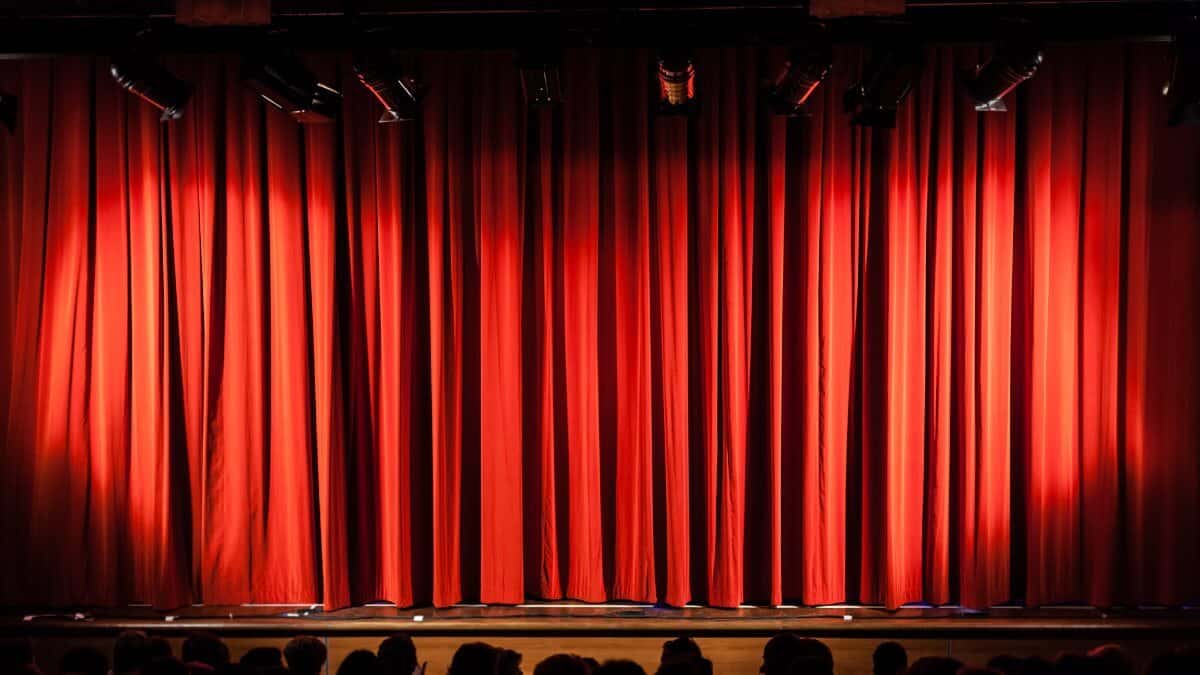


Home » The Truth About Showmanship: Performance in the Ring Should Be Breed-Specific

I am becoming that person. I am the traditionalist, though I remember thinking of myself as the progressive one; the person moving things forward and seeking changes. I wanted better for my dogs and my kennel – and still do – but now I long for the past: the educated, tenured experience of the dog judges of yesteryear. I miss the breed-specific decision-making process, where dogs excel based on their intrinsic breed qualities. I worry we are in the pedestrian era of dogs, where evaluating breeding stock is based on a performance and the dog’s ability to ASK FOR IT.
Recently, I had an exhibitor tell me that she’d lost the Breed to another exhibitor’s very good dog. It was tight competition and she just wanted to know what the decision came down to. So, she asked the breed aficionado what the determining factor was since both animals were so deserving. Well, in response, this very good judge said, “I just thought the other one was a little more ‘on’ today.” The exhibitor was aghast and told me that she’d asked one of the very few judges left who should be able to articulate exactly, point for point, why the other dog beat hers on the day (and she could handle the answer), but instead she got: “He was asking for it.”
Well, no exhibitor should ever feel like their dog’s performance is a make or break factor in the adjudication process, and judges shouldn’t use it as a make or break determiner. You shouldn’t lose because another dog “asked for it.” If it only takes asking for it, you would go in the ring and say, “Hey, I’m asking for this.” Good decisions can still be made, but quality judges make them based on breed-specific knowledge.
Showmanship, I think, is a misnomer for a dog’s performance. Dogs that are robotic and well-trained are certainly a pleasure to examine and go over, but they shouldn’t get rewarded just because of that. Dogs have their own personalities, and I don’t believe they all need to be “dumbed down” to the generic behavior of a show dog, especially at the Group level. That’s not appealing to some judges. For example, a dog like a Neapolitan Mastiff, undulating around the ring, should be a beautiful thing. Or even a Pekingese with its slight roll, shuffling back and forth, and a tail going back and forth as it moves down and back. It shouldn’t go around the ring like a Papillon! The counterfeit measure of showmanship as a criterion for purebred adjudication is sad and I think it’s a default for some judges.
I see this in the Best in Show ring often. While we like to use the same procedure for each dog, in a ring of seven Group-winning representatives, we really shouldn’t be using the same method of evaluation of this stock. To ask the seven dogs to all perform to the same act is simply wrong. To require the same standard of motion and expression of each animal would be a disservice to many breeds with distinct and unique temperament and behavior traits. Should you ask a Clumber to stand and free-bait and compare it to the Doberman? Should the Bulldog be asked to stand and pose like a Poodle? Should the energy of the Border Collie be compared to the performance of the Border Terrier?
This is where you see a divide in the sport. Showmanship for showmanship’s sake is one of those dividers for judges. There are judges who were not breeders, though they were extremely successful at handling and have become talented multiple-Group judges. Typically, they are not as breed-specific in their adjudication but are very comfortable judging on showmanship. These judges think, “That’s a great show dog, and if I were still showing dogs I would want to show that dog. That dog would do a lot of winning.” Showmanship plays a greater role in their evaluation. They reward showmanship because they may not know the nuances of a breed. So, they compensate by defaulting to a dog’s performance. The performance can be appealing. It can be enticing, and therefore, that dog wins on a showmanship level over a dog that maybe just doesn’t have as much appeal in terms of energy but may be superior in breed-specific qualities. A true breeder-judge, however, is judging on the unique qualities of the breed and is able to discover quality beyond the “asking for it” mentality.
To be very transparent, I changed my judging procedure when I watched a dog go Best in Show at a very prestigious dog show many years ago. After not going Best for many months, that dog went Best in Show because it had “nailed the stack” and the judge rewarded the performance. I’m not so sure the dog’s quality was worthy, even if it gave a great performance. That’s why I send dogs down and back and around in a continuous motion. The dogs go all the way down, all the way back, and they don’t stop; they circle around. A lot of people are concerned and confused by this. The Doberman people don’t like it because they love that free-stack. Honestly, there is a “grown-up Junior Showmanship” formula of free-baiting and “nailing the stack” perfectly, but the best judges could care less. Frankly, we don’t even notice it to the point that it’s a big part of the evaluation. You will get the chance in my ring to allow your dog to free-bait. It will come at the end of your go-round. I like to see dogs stand naturally. Recall that your dog should be standing freely and showing off his breed-specific personality trait. A Flat-Coat should stand longingly, wagging his tail, and the Boxer should stand up strongly with courage.
When I was starting to show in the 1980s, the late George Bragaw, who was a Sporting dog expert, in my opinion, taught me something important about judging dogs. George was not breed-blind, meaning, he was very good at keeping all breeds on the radar; no single breed slipped off his radar and no one breed had an advantage over the others. He adjudicated based on overall quality, and he used to say to me, “I really want to see your dog make turns.” What did he mean by this? Well, a lot of dogs, when they’re turning to go around, start to gallop or lose their trot at the turn, and that is just a measure of their overall soundness. How does a dog keep up on the go-round? George wanted to see the dogs make turns because the body has to change a bit to speed up, to slow down, and not lose pace. So, I don’t like the coming back and stopping to stand like a statue as it breaks the momentum.
It’s an interesting aspect of judging that the showmanship of free-baiting is often considered part of a true evaluation—or a tie-breaker. Although we do like to see dogs alert and at attention, everything should fall into place naturally when they stand calmly. I think how a dog stands freely is a better evaluation than one that is tensed up, “modeling” for you. We want dogs to show well, but we also want them to show well for their breed. You want a Cavalier to gate around the ring at a steady trot with the tail flat, waving on the same level as the backline and not like a flag up in the air, or clamped down between the legs. Any of the merry spaniels should have a happy tail. That’s showmanship. It’s a slow and steady trot that should be effortless. If you’re going to turn these animals into robots and ask them to behave in a different way, that doesn’t work. Do not ask a breed to perform against its breed character. Each breed has a very unique temperament, and when you ask for generic showmanship you’re asking the dogs to behave more similarly than uniquely. I can have my Golden and my Doberman both free-stack, and they will both stare at a piece of bait and not move, but their unique breed characters are not being displayed. The Golden should be much more relaxed and joyful. The Doberman should look intently at a piece of bait, but not the Golden or the Labrador – and I would hope to see a happy, playful tail action coming from the Sporting dogs.
Remember, part of breed evaluation is assessing breed character. We select our breed of choice because they are all unique. You find one that fits your lifestyle, one that fits into your own personality. You wouldn’t get a dog that’s high-strung for an apartment and think that you’re going to make him become a couch potato. It doesn’t work like that. The reality is that dogs have individual personalities and each breed has an inherent behavior, how they are as a breed. The manifestation of those two things results in their showmanship in the ring. I want all breeds to behave in a certain way that is their known life design. For example, the Bull Terrier is a happy animal; strong-willed, gregarious, fun, and comical. That’s what they are. You wouldn’t want one to be reserved and disinterested, and as a judge, the reserved animal would not be rewarded in the show ring, since it is atypical for the breed.
I have been the judge making the difficult decision that my friend was placed in, where I’ve had two well-deserving dogs to pick from. It is an honor to be faced with such quality. You do think to yourself: “I wish these two would never come back together because they’re just so good.” And yet a decision must be made. I am happy to say I never base the end result on their ability to outperform one another. As a judge, you always have the ability to reexamine, to get another up-close look at their heads, their muzzle length, their backskull width, their ear and eye placement, their eye shape and color, their lip line. All of these finer points are what we use to make those determinations at the end—NOT the fact that this one stood still longer, gave ear when he was looking at bait, putting on a performance of a lifetime. That is not a reason to win. It’s a reason to be proud, that he showed well, but it doesn’t change the quality of the animal. Doing that is not breed evaluation. That is more of a “talent portion” of the contest. That is showmanship on a given day, in the moment, when the dog was turned on, had some fire, and was looking really good. In fairness, most dogs can have this kind of a good day.
I think, at a bare minimum, every dog of every breed should be expected to come into the ring clean, nails done, ears clean, teeth clean, free of odor, free of matting, in the correct weight, in the correct trim, and presented in the appropriate fashion for the breed. Beyond that, the level to which someone is presenting their dog should not play a role in discovering quality. The judge’s job is to find quality regardless of its presentation. You should be able to find a dog that’s standing there naturally and think, “There’s a lot that’s positive in this exhibit.” As the judge, I may help the exhibitor along, because we’ve all been there: “Let me position the legs where I need to see them, to get the dog where I need it to be so that I can give it a fair adjudication.” In doing so, the performance meets a base level that I require to make that evaluation. I don’t need a dog to come into my ring and scream, “Pick me. I’m the one!” I can see the qualities I’m looking for—any good judge should.
To harken back to the roots and core beliefs of livestock evaluation, the best judges rely on their well-versed knowledge of individual breeds. We do not ask dogs to do anything other than be the prescribed animal in the written and approved parent club Breed Standard. The final decision is based on breed integrity and quality. No dog needs to ask for a win. All dogs must get the same careful consideration and be placed according to their merit. So, just maybe, this makes me progressively traditional!
